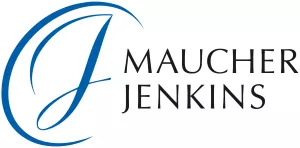The UK Intellectual Property Office (UKIPO) has this week published new Guidelines on patenting of inventions that relate to artificial intelligence (AI) inventions. This follows the new Practice Note on the patenting of Artificial Neural Networks (ANNs), that we reported here on 1 December 2023. These changes were necessitated by the decision of the UK Patent Cout in Emotional Perception AI Ltd. v Comptroller General of Patents, Designs and Trade Marks that we have already reported.
The Guidelines follow the Practice Note in saying that Examiners should not object to inventions involving ANNs under the "program for a computer" exclusion. These in turn follow the Court's judgment that an ANN may be implemented in hardware or in software which emulates such hardware, and that while both implementations involve a computer, neither involves a computer program. Accordingly, with patent claims explicitly drawn to an ANN, the court held as a matter of construction that the claimed invention was not a computer program at all. The computer program exclusion was not invoked (and neither was any other exclusion, such as a business method or the mere presentation of information).
The new guidelines go thus far and no further. Where claims are directed to an ANN, its training, or its use, such claims benefit from this judgement. But if a claim merely refers to machine learning or training a model, then it engages the computer program exclusion. The allowability of such claims should be determined by asking whether the invention makes a relevant technical contribution.
AI Scenarios
The UKIPO Guidance has eighteen numbered "Scenarios" concerning inventions that involve AI. Of these eighteen, those that relate to Applied AI and artificial neural networks were previously deemed ineligible for patent protection. That is to say, Nos. 7, 8 and 9 relating to applied AI were (and still are) deemed excluded, but Nos. 13, 14 and 15 were considered excluded and that advice is now reversed. Let us summarize this about-face in a few paragraphs for the sake of recording their significance.

Scenario 13 relates to a process for optimizing a neural network (see diagram). Previously, the guidance was that an iterative process of producing a simpler, optimised neural network starting from a base neural network was merely a process for adapting one computer program (the program implementing the base network) to produce an optimised computer program (the program implementing the optimised neural network). The UKIPO did not consider this to solve any technical problem with the computer itself, taking the view that any reduction in processing load or memory usage arises only as the result of the execution of program with fewer instructions and the view that this was a mere "circumvention" of the problems of processor load and memory usage. Now, following Emotional Perception, the Guidance simply says it involves an artificial neural network (ANN), whether implemented in hardware or software, so it is not excluded, and no other exclusion applies.
Scenario 14 is somewhat similar. It relates to avoiding unnecessary processing using a neural network. The neural network is invoked to classify a given data window if that data window differs from a preceding window, thereby reducing processing overhead. It was previously considered that such benefit was "only felt when the computer is concerned with executing the inventive program" and was not an improvement made to the computer irrespective of the application(s) being run. Thus, it was not regarded as solving a technical problem to do with the internal workings of the computer itself and devoid of technical contribution. This advice is now reversed.
The third scenario that is now reversed (Scenario 15) relates to a method of training a neural network involving determining by an initially trained neural network a level of confidence in accuracy of interpretation for each element of a specimen data set. If the confidence level for a given element is below a threshold, the training data is augmented with data related to the given element and the network is retrained using the augmented training data. When considering whether the contribution falls solely within the excluded subject matter, it was previously considered that identifying what specific additional training data is needed to improve the accuracy of a neural network may result in a more efficient method of training, but does not produce a neural network that itself operates more effectively or efficiently. That advice is no longer current. The advice now is simply that the invention involves an ANN and is not excluded from patentability.
With these changes, the UKIPO guidance is left with just three out of eighteen AI scenarios that are not patent eligible. The ineligible scenarios relate to:
- automated financial instrument trading;
- analysing patient health records; and
- identifying junk email.
Comment
We feel particularly attached to this subject. The lead cases referred to ( Merrill Lynch's Application [1989] RPC, 561) and AT&T Knowledge Ventures [2009] EWHC 343 (Pat)) are both cases of this Firm.
We have a sense of reluctance on the part of the UKIPO to let go. The new guidelines say "Examiners should consider whether other exclusions of section 1(2) apply to inventions involving ANNs. For example, devoid of any application, an ANN is an abstract mathematical model, so the mathematical method exclusion may apply in appropriate cases."
We see no basis for saying that "an ANN is an abstract mathematical model". Is this not the very point in Emotional Perception that as a matter of construction an ANN is not excluded from patentability? On the other hand, perhaps the wording is merely unfortunate, the point does indeed remain that the contribution of a claimed invention must not lie wholly within some other patentability exclusion, of which mathematical methods are one.
When considering that an artificial neural network may be interpreted as a mathematical method, the EPO's Guidelines (G-II, 3.3 and also G-II, 3.3.1) bring together both the issue of an artificial neural network and that of a mathematical method and discusses these in relation to computational efficiency (which is arguably similar to Scenarios 13 to 15 above).
As per those Guidelines, it is not sufficient that a mathematical method (i.e. an ANN classed by the EPO as a mathematical method) is algorithmically more efficient than prior-art mathematical methods to establish a technical effect. However, a mathematical effect may produce a technical effect due to having been applied to a field of technology and/or adapted to a specific technical implementation, wherein the computational efficiency of the steps affecting that the established technical effect is to be taken into account when assessing inventive steps (for example, where an improvement in computational efficiency qualifies as a technical effect as set out in G-II, 3.6.4 of the Guidelines). This is consistent with the EPO's general approach to 'non-technical' inventions following the Comvik approach (T0641/00). Therein, the novel non-technical features are set aside and the remaining novel technical features are assessed on whether they involve an inventive step.
Thus, the UKIPO's new Guidelines and Scenarios bring the UKIPO's approach of patenting inventions related to AI closer to the general approach followed by the EPO. However, there is no blanket rule for ANNs at the EPO. It appears then that the patentability of ANN inventions are favoured at the UKIPO.
The judgment of the Court in Emotional Perception is currently subject to appeal and we will be monitoring and reporting on any updates.
The content of this article is intended to provide a general guide to the subject matter. Specialist advice should be sought about your specific circumstances.



